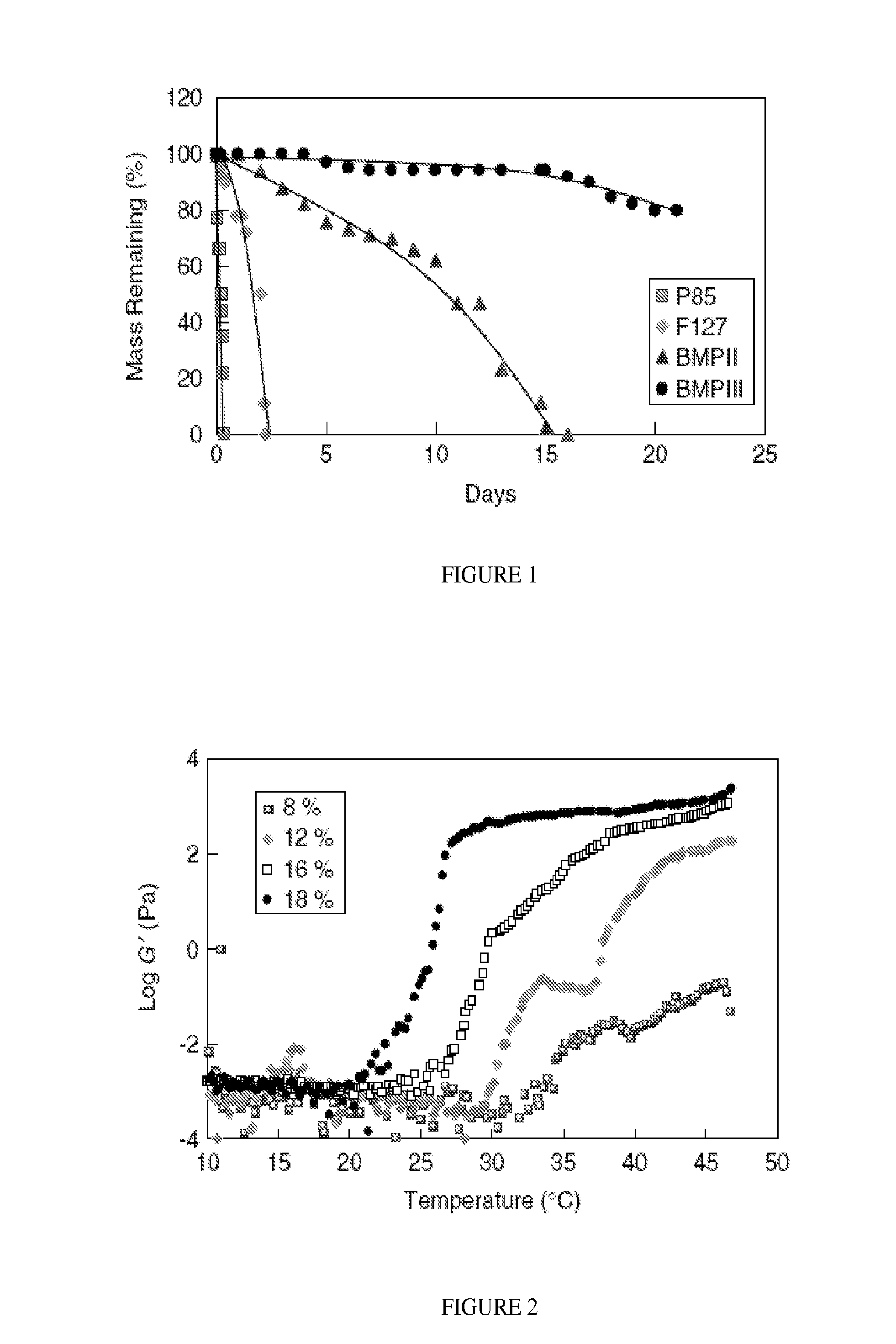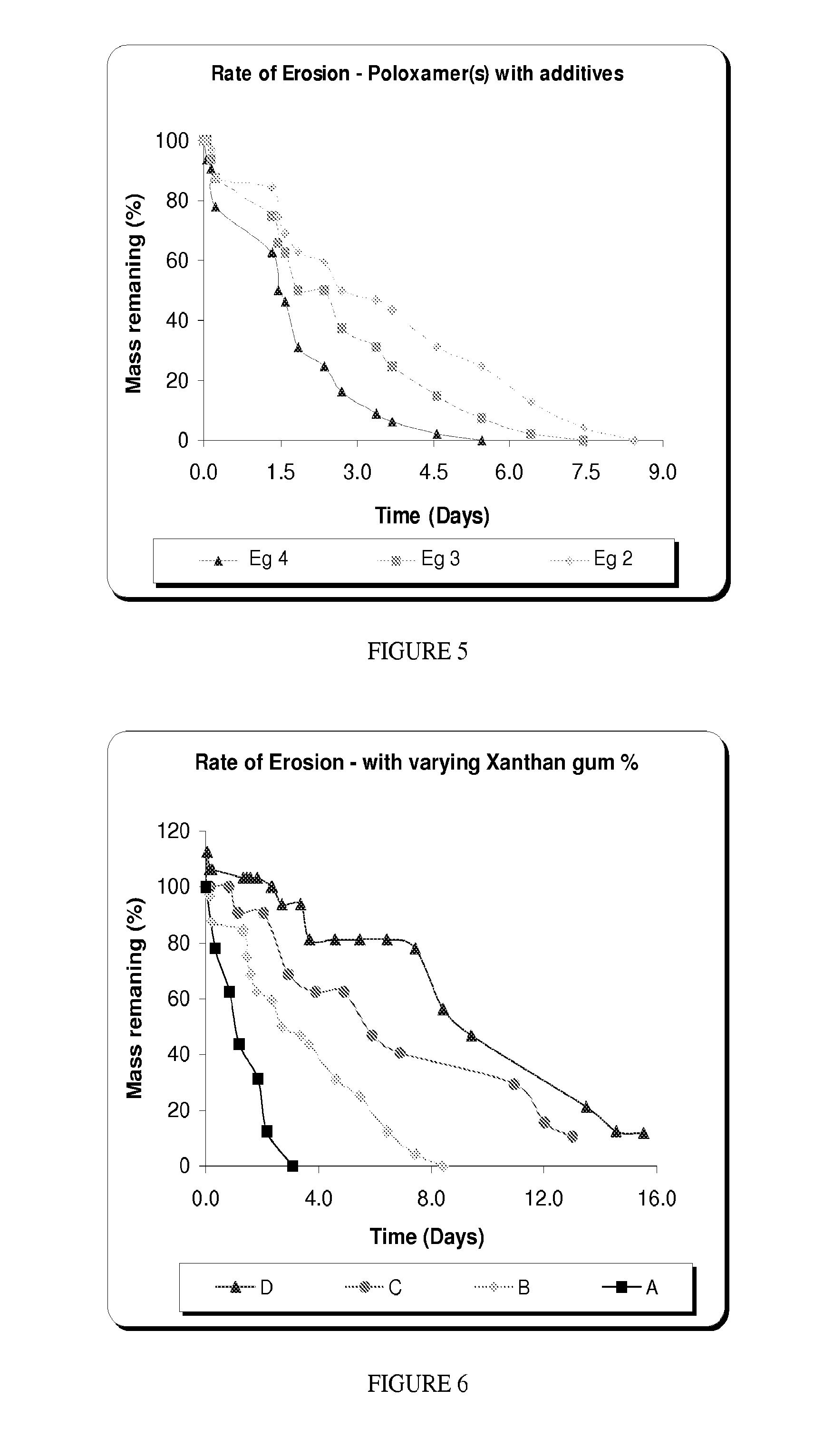Self Solidifying Bioerodible Barrier Implant
a bioerodible barrier and self-solidifying technology, applied in the field of bioerodible implants, to achieve the effect of convenient injection
- Summary
- Abstract
- Description
- Claims
- Application Information
AI Technical Summary
Benefits of technology
Problems solved by technology
Method used
Image
Examples
example 1
Evaluation of Gelling Temperature in Different Poloxamers
[0060]The following compositions of poloxamers are provided as examples to demonstrate the effect on gelling temperature from various combinations of poloxamers.
TABLE AIngredients (w / w)Gelling temperatureFormulationF127 (%)F108 (%)F68 (%)Tsol→gel (° C.)1A20——191B—20—301C20—2251D 515—301E1110—261F—202361G17 2.53311H1010537
[0061]The erosion of matrices produced from the above-formulations was also studied and select results are presented in FIG. 4. The matrix consisting of a combination of poloxamers (F127 & F108) is retained for a maximum of 8 days, in vitro. This may not be sufficient for therapies such as antibiotics, where retention is required for a longer period (˜7-15 days), in vivo. This warrants the addition of excipients, which reduce the erosion rate.
example 2
Example 1A with Xanthan Gum
[0062]In Examples 2-4, formulations 1A, 1D and 1G from Example 1 were combined with various excipients to demonstrate the effect of excipients on the gelling temperature and erosion rate. Erosion rates of the formulations reported in Examples 2-4 are plotted in FIG. 5.
TABLE BFormulation 2IngredientsQuantity [% (w / w)]Clindamycin HCl1.00Poloxamer 407 (F127)16.50Xanthan gum0.50Water82.00Total volume100.00Gelling temperature (° C.)23
example 3
Example 1D with Sodium Chloride
[0063]
TABLE CFormulation 3IngredientsQuantity [% (w / w)]Clindamycin HCl1.00Poloxamer 407 (F127)5.00Poloxamer 338 (F108)15.00Sodium Chloride0.50Water78.50Total volume100.00Gelling temperature (° C.)24
PUM
| Property | Measurement | Unit |
|---|---|---|
| Temperature | aaaaa | aaaaa |
| Time | aaaaa | aaaaa |
| Time | aaaaa | aaaaa |
Abstract
Description
Claims
Application Information
 Login to View More
Login to View More - R&D
- Intellectual Property
- Life Sciences
- Materials
- Tech Scout
- Unparalleled Data Quality
- Higher Quality Content
- 60% Fewer Hallucinations
Browse by: Latest US Patents, China's latest patents, Technical Efficacy Thesaurus, Application Domain, Technology Topic, Popular Technical Reports.
© 2025 PatSnap. All rights reserved.Legal|Privacy policy|Modern Slavery Act Transparency Statement|Sitemap|About US| Contact US: help@patsnap.com



